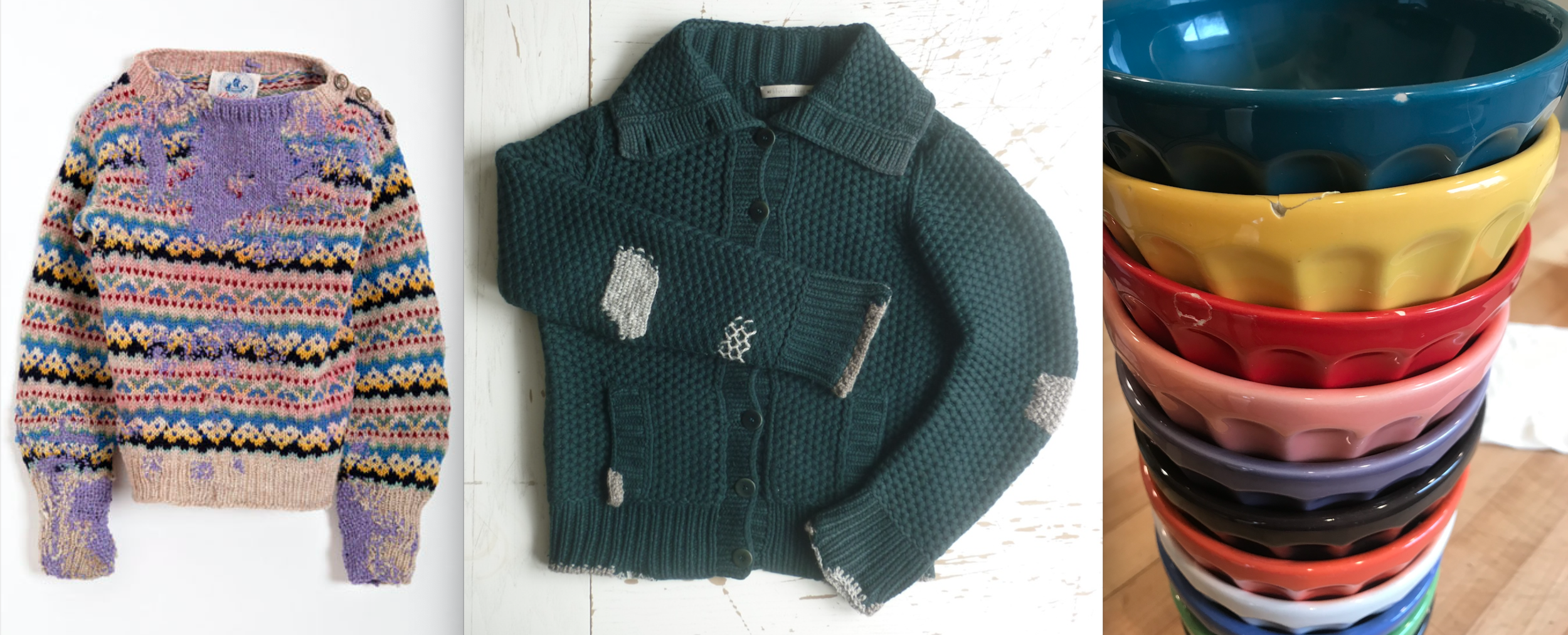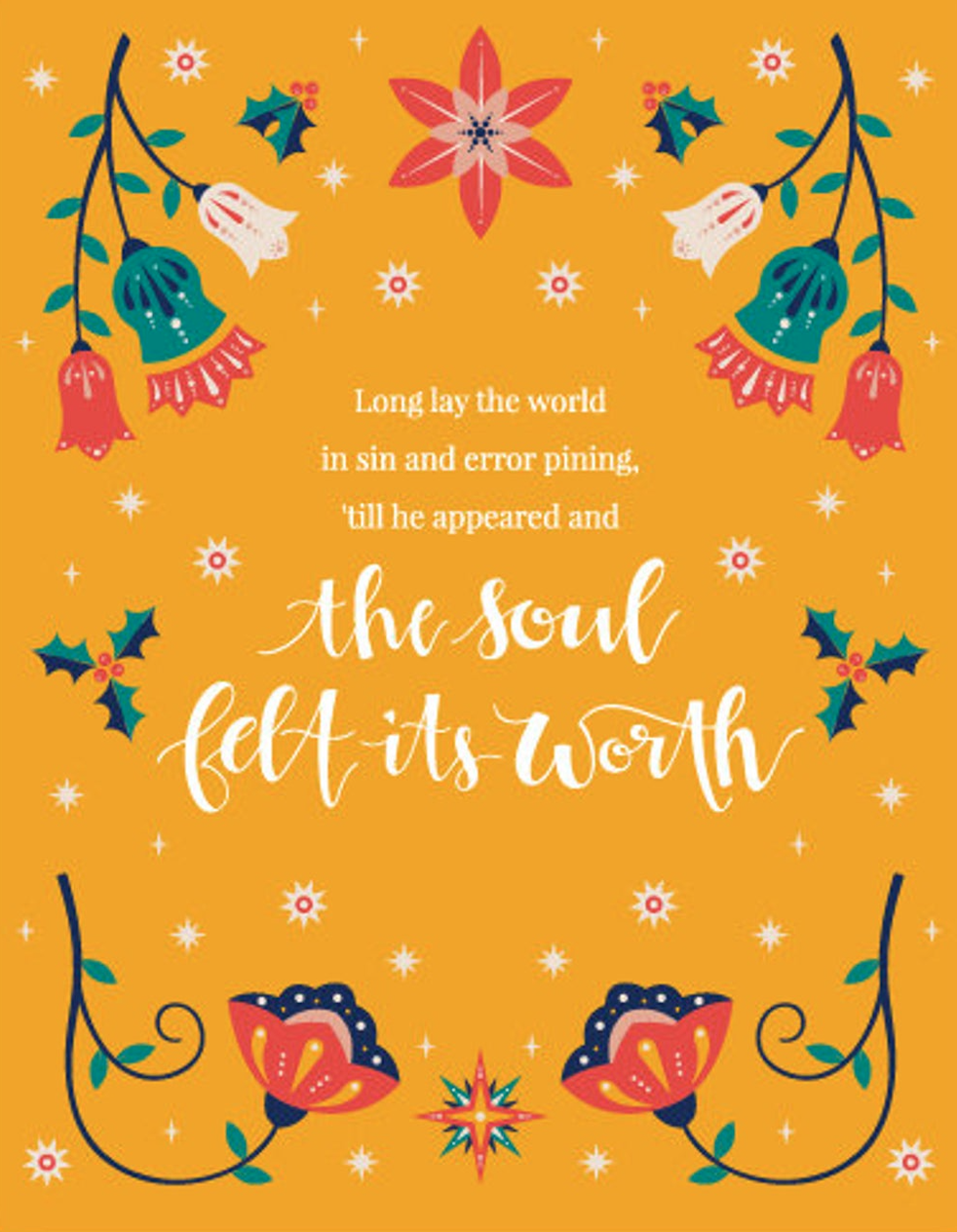Artistry by Celia Pym (left), Tom van Deijnen (middle) and my husband (right).
Visible Mending. This past week, as I bathed in Jan Richardson’s Epiphany writings, this captivating phrase rubbed me raw then seeped into my bones.
Visible mending doesn’t seek to dismiss the presence of damage or disguise its restoration. Instead, it allows a repair to show itself, taking a defiant delight in salvaging what some might consider ruined.
Richardson’s inspiration comes from the works of English artists such as Celia Pym & Tom van Deijnen (shown above). As I perused their portfolios, a question from my own deep brokenness rose up:
“Why would you do that?!?!”
Damaged objects get under my skin. I am among those who consider them ruined. If finances allow, I replace broken household items with neck-breaking speed. My husband’s refusal to acknowledge a freezer on its last leg until steaks spoil rather than when it stops making ice, balances me out. We don’t do visible mendings—we do poorly disguised chips in my favorite Anthropologie latte bowls. Also shown above.
Which begs the question…
“Why do I do that?!?!”
Growing up, my mom’s telling of my birth story went something like this:
“My due date was in early December so I had this cute ‘Baby’s First Christmas’ outfit for you. But you took so long to come that you didn’t get to wear it that year. Of course you were too big for it by the next Christmas, so I never got to put it on you.”
A wise man (a therapist, of course) reframed it this way:
“So you ruined Christmas while still in the womb?”
That does sound crazy.
I refrained from sharing that actually I ruined New Years as well. Pregnancy complications meant bed rest for my mom the week between the two holidays. I was delivered by emergency c-section on Wednesday, January 2nd—an official child of woe.
It’s relieving to know I come by my crazy honest.
I’m grateful Jan Richardson answers my very important why:
Why purposely mend a garment in a way that draws attention to its flaws?
The point of such repair is not to erase every sign of damage; the point, in part, is to show that the damage does not have the final word. What finally emerges from the mending will be both scarred and beautiful. Most of all, it will be whole.
Turns out when something precious is irreplaceable (for whatever reasons), the pain of parting with it changes your perspective on damage. Flaws become the medium for repair when wholeness becomes enough.
How did your family respond to damaged and broken things? Whether it was a meal, a mood, a vacation or a report card, what do you remember “ruining” growing up? Were “scarred” things considered beautiful in your family? What story of damage do you need to tell in order to make room for the wholeness visible mendings create?
Between Touches Zoom Call: Monday, January 27th 6-7:30pm MST
(1 spot left)
Denver Story Group: Monday, February 10th 6-9pm @SC
(2 spots left)



